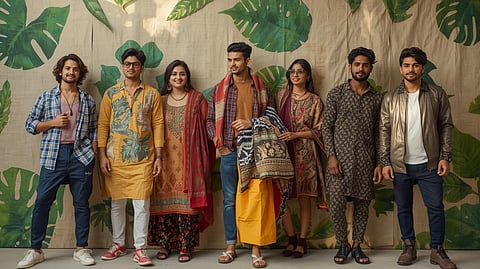

Fast fashion influencers often promote rapid consumption that harms India’s environment and artisans. A new wave of conscious creators is championing sustainable and ethical fashion, spotlighting Indian brands like Mast & Harbour’s sustainable collection and House of Pataudi’s eco-friendly ethnic wear. These choices empower local craftsmanship and reduce waste, offering stylish alternatives available on Myntra and Amazon.in. Embracing sustainability in fashion is becoming a movement across Indian cities from Mumbai to Bengaluru.
Fast fashion has long been a dominant force in India’s urban fashion scenes, with influencers encouraging rapid wardrobe turnovers. However, this trend often comes at a significant environmental and social cost—polluting waterways, exploiting workers, and overwhelming landfills in cities like Delhi and Chennai. Against this backdrop, a shift is underway as conscious creators rise, promoting sustainable fashion rooted in India’s rich textile heritage and eco-friendly innovations.
Indian consumers are increasingly drawn to brands that prioritize sustainability without compromising on style. For instance, Mast & Harbour’s sustainable fashion line on Myntra offers affordable, eco-conscious apparel that uses organic fabrics and responsible production methods, appealing to young professionals in Mumbai and Pune seeking ethical choices. Similarly, House of Pataudi on Myntra revives traditional Indian ethnic wear using sustainable fabric sourcing and artisanal craftsmanship, connecting modern consumers with India’s cultural roots.
Beyond these, products like Ether’s organic cotton t-shirts (Myntra) and Bamboo Tribe’s bamboo fiber clothing are popular for their natural, biodegradable materials that reduce environmental strain. These brands showcase how India’s fashion industry can innovate sustainably while supporting local farmers and artisans.
The rise of conscious creators, Indian influencers, bloggers, and designers are playing an instrumental role in this transformation. They educate followers about the environmental impact of fast fashion and highlight alternatives like Doodlage’s upcycled garments and Nicobar’s handloom collections. FabIndia and Upasana also play crucial roles by promoting organic cotton and handloom clothing that empower rural craftspeople, preserving traditional techniques and reducing carbon footprints.
Shopping sustainably in India is now easier than ever with e-commerce platforms such as Myntra, Amazon.in, and brownliving.in, which feature curated selections from brands like No Nasties (organic cotton) and Brown Living’s sustainable products. This accessibility encourages consumers from metros cities to Tier-2 cities to rethink their fashion choices.
In conclusion, the problem with fast fashion influencers in India is their role in perpetuating wasteful consumption. In contrast, conscious creators offer a hopeful path forward—a blend of style, sustainability, and social responsibility. By embracing Indian sustainable brands and supporting ethical production, consumers contribute to a greener future and celebrate India’s diverse textile heritage.
